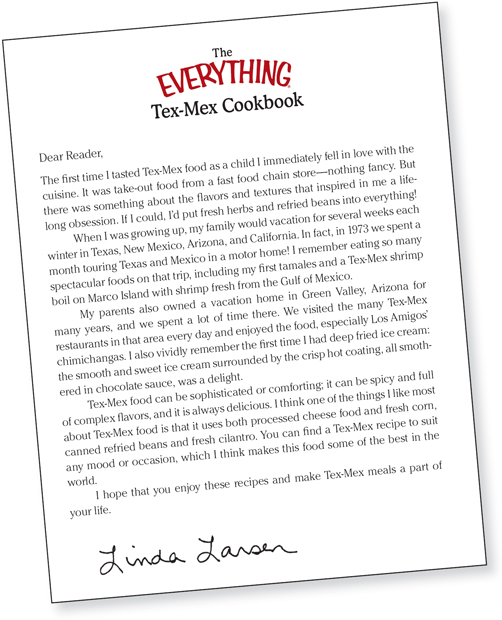 The EVERYTHING Series
The EVERYTHING Series
| Editorial |
| Publishing Director | Gary M. Krebs |
| Associate Managing Editor | Laura M. Daly |
| Associate Copy Chief | Brett Palana-Shanahan |
| Acquisitions Editor | Kate Burgo |
| Development Editor | Katie McDonough |
| Associate Production Editor | Casey Ebert |
| Production |
| Director of Manufacturing | Susan Beale |
| Associate Director of Production | Michelle Roy Kelly |
| Cover Design | Paul Beatrice
Erick DaCosta
Matt LeBlanc |
| Design and Layout | Colleen Cunningham
Holly Curtis
Sorae Lee |
| Series Cover Artist | Barry Littmann |
Visit the entire Everything series at
www.everything.com THE
EVERYTHING
TEX-MEX
COOKBOOK 300 flavorful recipes to
spice up your mealtimes! Linda Larsen

To my parents, Marlene and Duane, for their love of spicy food and
for introducing me to Tex-Mex foods in the first place. Copyright 2006, F+W Publications, Inc. All rights reserved.
This book, or parts thereof, may not be reproduced in any form without permission
from the publisher; exceptions are made for brief excerpts used in published reviews. An Everything Series Book.
Everything and everything.com are registered trademarks of F+W Publications, Inc.
Published by Adams Media, an F+W Publications Company
57 Littlefield Street, Avon, MA 02322. U.S.A.
www.adamsmedia.com ISBN 10: 1-59337-580-8
ISBN 13: 978-1-59337-580-5
Printed in the United States of America. J I H G F E D C Library of Congress Cataloging-in-Publication Data
Larsen, Linda.
The everything Tex-Mex cookbook : 300 flavorful recipes to spice up your mealtimes! / Linda Larsen.
p. cm.(An everything series book)
ISBN 1-59337-580-8
1. Mexican American cookery. II. II.
Series: Everything series. TX715.2.S69L37 2006
641.5979dc22 2005026083 This publication is designed to provide accurate and authoritative information with regard to the subject matter covered. It is sold with the understanding that the publisher is not engaged in rendering legal, accounting, or other professional advice. If legal advice or other expert assistance is required, the services of a competent professional person should be sought. From a Declaration of Principles jointly adopted by a Committee of the
American Bar Association and a Committee of Publishers and Associations Many of the designations used by manufacturers and sellers to distinguish their products are claimed as trademarks. Where those designations appear in this book and Adams Media was aware of a trademark claim, the designations have been printed with initial capital letters.
Cover photographs Banana Stock, Corbis, Ingram Publishing, and PhotoDisc. This book is available at quantity discounts for bulk purchases.
For information, please call 1-800-289-0963. Contents 
 Acknowledgments Thanks to my husband, Doug, for his help and encouragement during this endeavor. Thanks also to my agent, Barb Doyen, for her clear head and calm nature. My editor, Kate Burgo, deserves thanks for her patience and belief in me. And thanks to my father-in-law and his wife, T.E. and Dagmar, for supporting me.
Acknowledgments Thanks to my husband, Doug, for his help and encouragement during this endeavor. Thanks also to my agent, Barb Doyen, for her clear head and calm nature. My editor, Kate Burgo, deserves thanks for her patience and belief in me. And thanks to my father-in-law and his wife, T.E. and Dagmar, for supporting me.
Introduction Did you know that Tex-Mex cooking is the oldest regional cuisine in America? You would think that such a time-honored cuisine would have clear-cut recipes and menus and be easy to define. But it's hard to say exactly what Tex-Mex cooking is. There are as many definitions as there are dishes! Generally, Tex-Mex cooking consists of recipes and foods native to Mexico, updated with the foods and customs of the state of Texas and, as the cuisine expanded, France, Spain, and the rest of America. These recipes range from Frito Pie to Caramel Flan, from Barbecued Brisket to Ceviche, and the foods include everything from processed cheese food to fresh herbs, shrimp, lard, chiles, and tortilla chips. Tex-Mex cooking is scorned by many sophisticated cooks and restaurants, but it can be a delicious and inventive style of cooking. Of course, ingredients such as yellow cheese, raw onion, and refried beans can be used judiciously and well, or can be overdone.
The food can be complex and subtle or truly searing and obvious, depending on the taste and mood of the cook. Of all the Tex-Mex, Texas, and Mexican cookbooks on the market, very few have included some commonly used appliances: the crockpot and the indoor dual-contact grill. Since these tools save time and money and produce high quality foods, they have been incorporated into the book. Crockpot Ranch Casserole made in the crockpot is creamy and rich and is ready when you get home. Texas Toast Grilled Sandwiches and Cheese Quesadillas are crisp, golden, and perfectly done when made in a dual-contact grill. If you are following a special diet, whether low-fat, low-carb, or South Beach, Tex-Mex cooking can fit into your lifestyle.
If you are eating low-carb, most of the meat and vegetable dishes are made for your diet. For low-fat devotees, the vegetarian, side dish, and salad recipes are all good choices. The special foods of Tex-Mex cooking, especially chiles and sauces, are excellent choices to add flavor and variety to any diet and many recipes. And the most commonly used ingredients, corn and chiles, are very high in vitamin content, especially vitamins A and C. Sauces are very important in Tex-Mex cooking. Once you have mastered Enchilada Sauce, Chili Gravy, and different types of salsas, you will be able to make most dishes in this cuisine.
Read the chapter on sauces carefully, as they are the finishing touch to many recipes in the book. As in all cooking, you choose the level of seasoning and spices. If your family isn't fond of spicy hot food, omit the chile peppers in these recipes or substitute milder peppers for the hotter varieties. Use parsley instead of cilantro for a milder taste, and choose ground black pepper over red pepper flakes for less heat. You can also increase the heat level. Learn about the heat and flavors of chile peppers and spices and you will always be able to control the taste of the food you serve.
This book will teach you about the foods, cooking techniques, and tastes of Tex-Mex cooking. You'll learn about calcabacita, nopales, burritos, pasilla chiles, quesadillas, enchiladas, tacos, epazote, churros, chalupas, frijoles, gorditas, and more, expanding your knowledge of the world along with your kitchen repertoire. There's no better way to travel without leaving your home than to learn a new cuisine.  Chapter One Tex-Mex Basics The phrase Tex-Mex was first mentioned in the media in 1973 as a style of food combining Mexican and Texan cuisines popular in the southern part of the United States. To food snobs, the term meant fast food served to the undiscerning masses. The foods and recipes evolved and the cuisine borrowed ingredients from other cultures as it grew.
Chapter One Tex-Mex Basics The phrase Tex-Mex was first mentioned in the media in 1973 as a style of food combining Mexican and Texan cuisines popular in the southern part of the United States. To food snobs, the term meant fast food served to the undiscerning masses. The foods and recipes evolved and the cuisine borrowed ingredients from other cultures as it grew.
Next page
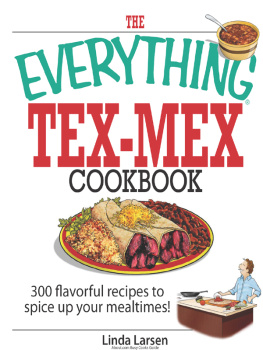
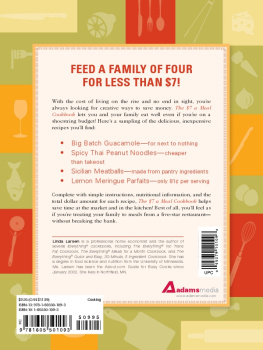

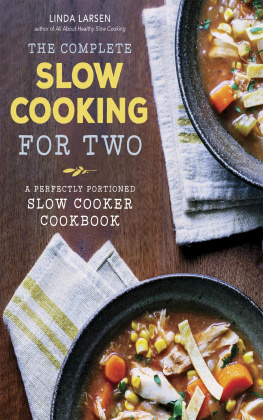
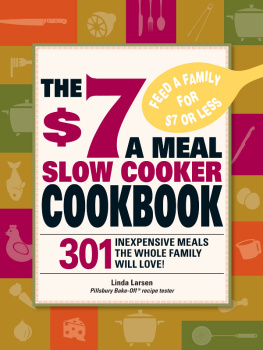

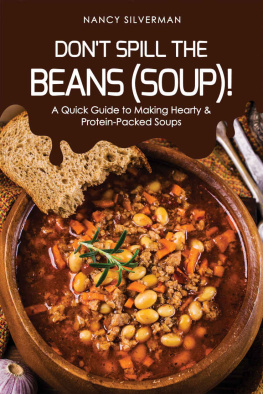
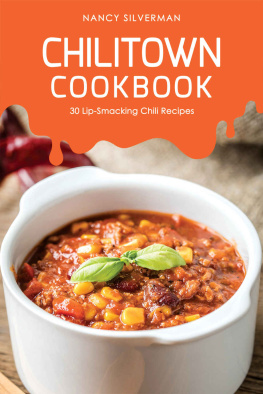

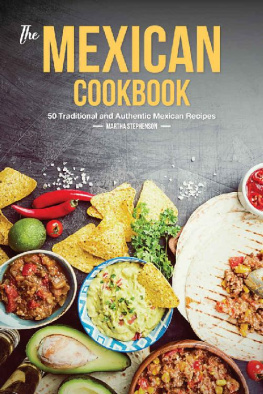

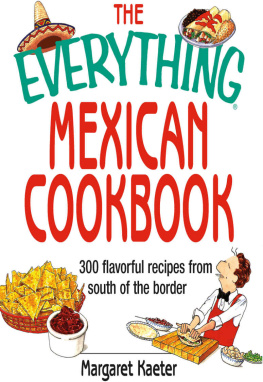

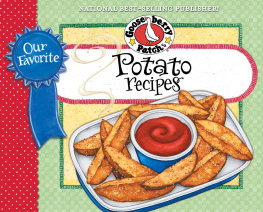

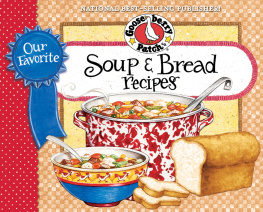


 The EVERYTHING Series
The EVERYTHING Series To my parents, Marlene and Duane, for their love of spicy food and
To my parents, Marlene and Duane, for their love of spicy food and
 Acknowledgments Thanks to my husband, Doug, for his help and encouragement during this endeavor. Thanks also to my agent, Barb Doyen, for her clear head and calm nature. My editor, Kate Burgo, deserves thanks for her patience and belief in me. And thanks to my father-in-law and his wife, T.E. and Dagmar, for supporting me.
Acknowledgments Thanks to my husband, Doug, for his help and encouragement during this endeavor. Thanks also to my agent, Barb Doyen, for her clear head and calm nature. My editor, Kate Burgo, deserves thanks for her patience and belief in me. And thanks to my father-in-law and his wife, T.E. and Dagmar, for supporting me. Chapter One Tex-Mex Basics The phrase Tex-Mex was first mentioned in the media in 1973 as a style of food combining Mexican and Texan cuisines popular in the southern part of the United States. To food snobs, the term meant fast food served to the undiscerning masses. The foods and recipes evolved and the cuisine borrowed ingredients from other cultures as it grew.
Chapter One Tex-Mex Basics The phrase Tex-Mex was first mentioned in the media in 1973 as a style of food combining Mexican and Texan cuisines popular in the southern part of the United States. To food snobs, the term meant fast food served to the undiscerning masses. The foods and recipes evolved and the cuisine borrowed ingredients from other cultures as it grew.